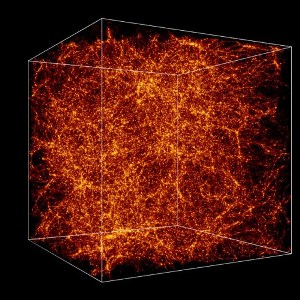Friday, July 20, 2012
Full of strange phenomena and Mystery in Space
A. Collision Between GalaxiesApparently each other galaxies can "eat" each other. Even more surprising is the Andromeda galaxy is moving closer to our own Milky Way galaxy. The picture above is a simulation of Andromeda and our galaxy collisions, which will occur in about 3 billion years.
2. QuasarQuasar glow at the edge of the universe that we can see. Quasars release energy equivalent to the energy of hundreds of galaxies combined. It could be that quasars are a very big black hole in the hearts of distant galaxies. This image is the quasar 3C 273, which was photographed in 1979.
3. Dark Matter (Dark Matter)Scientists think that dark matter (dark matter) is the largest constituent of the universe, but can not be seen and detected directly by current technology. Candidates range from heavy neotrino to invisible black holes. If dark matter really exists, we must still require a better knowledge of gravity to explain this phenomenon.
4. Gravity waves (Gravity Waves)Gravitational waves are distortions fabric of space-time predicted by Albert Einstein's theory of general relativity. Wave propagates in the speed of light, but weak enough so that scientists hope to detect it only by the colossal cosmic events, such as the merging of two black holes as shown above. LIGO and LISA are two detectors designed to observe these elusive waves.
5. Vacuum EnergyQuantum physics tells us that contrary to appearances, empty space is a bubble made of subatomic particles "virtual" who are constantly created and destroyed. Particles that occupy each cubic centimeter of space with a certain energy, based on the theory of general relativity, producing antigravity force that makes more space to expand. Until now no one really knows the cause of the universe's expansion.
6. Mini Black HoleIf the theory of gravity "braneworld" a radically new and proven correct, then scattered thousands of mini black holes in our solar system, each about the size of the atomic nucleus. Unlike black holes in general, mini black holes are the remnants of the Big Bang and affect space and time in different ways.
7. NeutrinoNeutrinos are elementary particles are massless and unchargedwhich can penetrate the metal surface. Some of the neutrino is penetrating your body while reading this article. Particles "phantom" was produced in the core of stars and supernova explosions. The detector is placed below the surface of the earth, beneath the surface of the sea, or into a large chunk of ice as part of IceCube, a special project to detect the presence of neutrinos.
8. Extrasolar planet (Exoplanet)Until the early 1990s, we only know our own planet in the solar system. However, at this time astronomers have identified more than 200 extrasolar planets outside our solar system. Search the Earth both seem to have succeeded until now. Astronomers generally believe that better technology is needed to find some of the world as on earth.
9. Cosmic Background RadiationRadiation is also called the Cosmic Microwave Background (CMB) which is the remnant radiation that occurs when the Big Bang birth of the universe. First detected in 1960 as the decade of radio noise that appear scattered throughout the universe. CBM is considered as the most important evidence of the truth of the theory of Big Bang. Accurate measurements by the WMAP project showed that the CMB temperature is -455 degrees Fahrenheit (-270 Celsius).
10 AntimatterAs the evil Superman, Bizarro, particulate matter (normal matter) also had the opposite versions of themselves called antimatter. For example, an electron has a negative charge, but the antimatter positrons have a positive charge. Matter and antimatter annihilate each other when they collide and their mass is converted into energy via Einstein's equation E = mc2. Some spacecraft designs incorporate antimatter engine.
Subscribe to:
Post Comments (Atom)










No comments:
Post a Comment